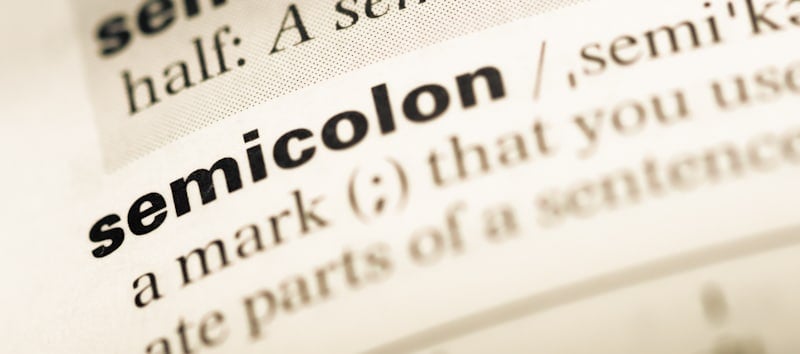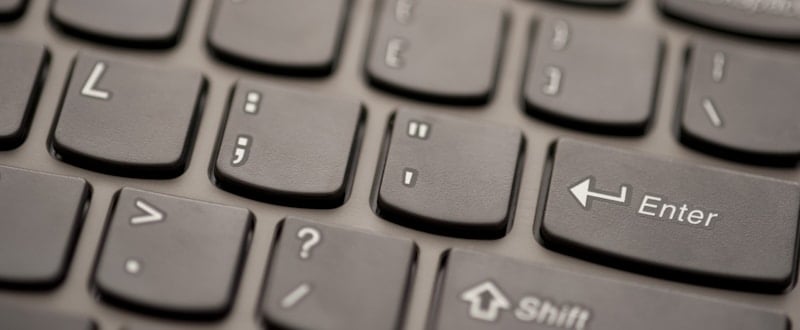The first things we learn in school are reading and writing. As soon as we know how to transmit what we think and speak in writing, we need to follow the rules. Spelling and grammar, orthography, and punctuation help us transfer what we understand and say with sense in the paper, and grammar is crucial. Why is this important? Because while writing, what we write must be clear and understandable, so the public understands the message transmitted.
I know this question has come up multiple times in the life of the daily writer, whether a school, college, or professional. Capitalization rules are sometimes hard to remember because we only know the basics, but this one has caught us out of guard whenever the question pops up in our minds while writing. Do you capitalize after a semicolon? The answer is no. Whenever you separate two independent clauses or connect them, the basic rules of capitalization apply here; you only capitalize if it is followed by the letter “I” or a proper noun or acronyms.
Body language and punctuation
Body language is a category of non-verbal communication in which physical behaviors are used to express and convey information. Punctuation is seen in writing as the body language, allowing the readers to hear the way you want to be heard. The tools we use in writing to separate clauses, sentences, and phrases, so their intended meaning is clear to others are called punctuation.

For a better understanding, it is the system of symbols we use to separate written sentences and part of them and make their message or meaning clear, calling each character “Punctuation mark.” These symbols are a great ally while writing since they are the ones who make the sentence understandable.
These symbols help us simulate particular no verbal elements of speech such as volume, pauses, and intonation. The English word semicolon comes from English colon, English semi- (Half. Partial, incomplete. Somewhat, rather, quasi-.). A hybrid coined from Latin-derived semi- + Greek-based colon. The mark itself was (and is) in Greek the point of interrogation.
The semicolon is one of the sentence’s internal punctuation symbols that help two independent clauses closely related in thought. Aldus Manutius the Elder was the first who painted the semicolon in 1496 and established the practice of using this new punctuation symbol in the direction of independent link statements. Aldus Manutius the Elder was the first who painted the semicolon in 1496 and established the practice of using this new punctuation symbol in the direction of independent link statements. When a semicolon joins more ideas in sentences, those ideas are the given equal value.
Importance of punctuation in writing
Even though capitalization rules seem simple, capitalization in English includes more than the basic knowledge of capitalizing names and titles in professional and academic writing. From language to language, the importance of capitalization varies; in English, punctuation, like in any other language, is crucial because the proper use of these rules is the one that allows the readers to have a better insight into what the writer is saying.
Exclamation marks and question marks are considered terminal marks and indicate the end of a sentence; conversely, the comma, semicolon, and colon are usually part of the inner side of the sentence, making them secondary link marks. Its strength is equal to the colon and falls between terminal marks and the coma.
The five more common used punctuation marks in English are as follows:
- The full stop/period
- The comma
- The question mark
- The exclamation mark
- The semicolon
Do you use capitalization after a semicolon? The answer is no. Semicolons are always followed by a lowercase letter, as we know, the following letter or term would ordinarily be capitalized following basic punctuation rules, for example:
The letter (I):
- Mary went to the coffee shop; I went to the mall.
- Martin came on a plane; Maurice took a train.
Acronyms:
Spell out amino acid when followed by words; abbreviate aa without definition when paired with numbers (absolute or percentage).
Proper nouns:
- Jacob wants to go out; Jennifer wants to stay home.
- John went to the movie theater; Colleen went to her grandmother’s house.
Semicolons usage
Do not capitalize ordinary words after a semicolon
- I am here; you are over there.
A semicolon can connect two independent clauses that are related closely.
- My brother is going to Russia for the summer; he will be studying Russian.
- Jasmin is a good speaker; she speaks very clearly.
- Michael likes Rum; Bonnie likes tea.
- You did your best; now, let’s hope you pass the assessment.
- Monica drives a Jaguar; Rachel drives a Porsche.
When joined by a transition word or phrase, semicolons are used to separate two independent clauses.
- It is essential to drink enough water; However, too much water is bad for your health.
- Joshua did not eat the leftovers in the fridge; instead, he ordered Chinese food.
When three or more items in a list already have commas in them, semicolons separate them:
- I like oversized, red shirts; black, sneaker shoes; and fluffy gray pillows.
- I live with Anthony, an engineer; Madison, a model; and Carson, an actor.
Only when the writer wants to limit the gap between closely linked sentences semicolon can replace a period.
- Call me later; you can give me an answer then.
- We have paid our dues; we expect all the privileges listed in the contract.
Outside ending quotation marks, a semicolon should be placed when the quoted matter ends with a semicolon, the semicolon in the quotation is dropped:
- The agency reviewed those petitions that were “timely“; it avoids those that were late.
- He had heard about “Onix”; he didn’t know what it was.
When a comma replaces a period in a quotation, or when a quote otherwise links two independent sentences, In rare instances, a semicolon is needed.
- “I have no use for this,” she said; “you are welcome to it.”
- “Is this your earring?” he asked; “I found it on the floor.”
When using an introductory expression such as, for example, that is, and namely, only before in place of a colon, comma, dash, or parenthesis. A semicolon is often used.
- John and Meredith agreed; that is, it would be better for all if John found somewhere else to be while Meredith finished cooking.
Between independent clauses joined by a connector such as but, or, and, nor, etc., A semicolon may be used when one or more commas appear in the first clause.
- When I finish there, and I will soon, I’ll be glad to help him; and that is a promise I will keep.
When two clauses are balanced, opposed, or contradictory, closely related independent clauses are not conjoined with a coordinating conjunction.
- My wife would like a cocktail; I would prefer rum.
- I went to the Volleyball court; I was told it was closed for maintenance.
- I told Paulette she’s running for the hills; I wonder if she knew I was joking.
Use a Semicolon to Give a Wily Wink. 😉
Solid knowledge of the English language will never be replaced by emoticons, but they can spice it up from time to time. So whether you’re using it to animate a complex sentence or to give someone a wink, now you know how to choose the right way to do it.
Conclusion
The semicolon usage, as we saw, is essential for a better understanding while writing and while reading. This orthographical or punctuation symbol, whatever you want to call it, allows us, writers, and others to deliver a clear message of our ideas when passing what is in our minds to paper, computer files, or presentations.
Punctuation will always be an essential tool for writers and people who stay in touch with this activity. If we can master this, our ideas will be clear as water to others when reading our writings to pass the message in with the same clearness to others.
Shawn Manaher is the founder and CEO of The Content Authority. He’s one part content manager, one part writing ninja organizer, and two parts leader of top content creators. You don’t even want to know what he calls pancakes.


